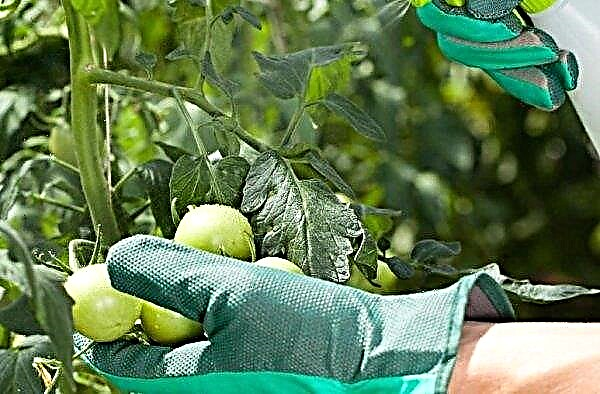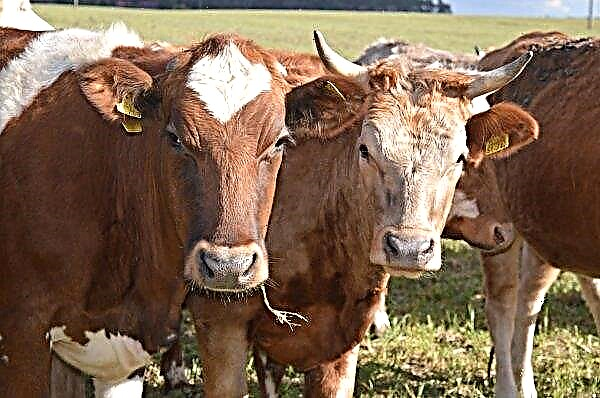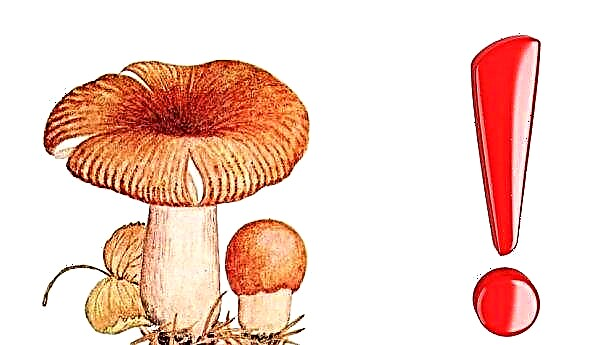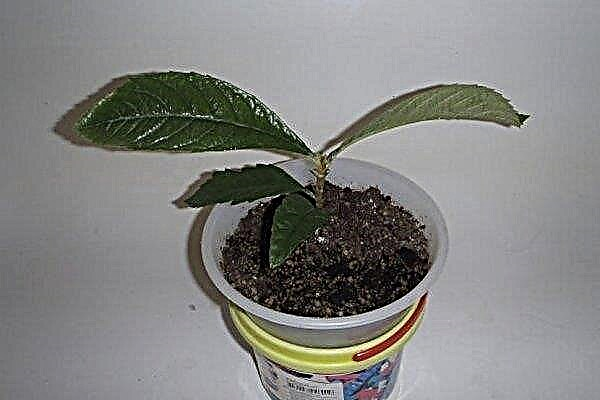Everyone who is engaged in beekeeping professionally knows that most configurations of beehives and frames are not adapted to the natural life of bees - they do not take into account their natural way of life, for which they usually used hollow trees. Therefore, the bee family, according to the natural program laid down in these insects, stubbornly builds high honeycombs. To bring the swarm as close as possible to the natural form of the hollow, the rationalizers invented narrow-high hives.
Narrow-high hive: design features and benefits
Narrow-high houses for bees have their own characteristics, different from other designs.
Did you know? The first inventor of a collapsible frame hive is considered to be the Russian scientist P. I. Prokopovich, who at the beginning of the 19th century came up with a new design for that time of the bee house, which he called Petersburg. This configuration when pumping honey allowed keep the bee family.
Among them:
- non-baltic configuration;
- wall thickness up to 37 mm, which maximally allows you to maintain a constant favorable microclimate inside;
- in the manufacture of beehives using high-quality wood or safe building materials;
- nest cases and shops are made of pine timber - wood, most suitable for the construction of beehives;
- the inner part of the body is made of birch plywood sheets, which are environmentally friendly material;
- outside, the houses are studded with fiberboard, which gives not only a neat appearance, but also serves as additional insulation;
- a foam layer is placed between the inner and outer walls of the hives for better insulation from temperature extremes;
- the frames in the hives are vertically arranged, which contributes to greater honey collection;
- since the bees are not able to move sideways, the construction of the honeycombs is located horizontally up, which allows insects to easily get food;
- such a hive gives bees a hibernation-free winter;
- with the onset of spring, bees and the uterus work on top of the frame, and on hot days, when the family increases in number, insects descend down the hive;
- in such houses, the bees are gaining strength well by the time of the honey collection;
- 12 narrow frames can be installed in one slot;
- with hives of a similar configuration, inexperienced beekeepers have the opportunity to work without much difficulty;
- the cells are placed in continuous cassettes, in 3 floors, frames are also placed there;
- the structure can be removed without difficulty;
- the bees freely enter the houses and vice versa, without accumulating in the summer houses, since there are more than two of them in a narrow high house.

- Narrow hives have several advantages:
- Hives of this configuration are easily transported.
- The honeycombs have sufficient area for full egg laying by the uterus, and this also helps in the winter to place a significant amount of honey, which is necessary for bees and larvae.
- In winter, bee energy is not spent on a nesting gap of up to 4 cm.
- There are cells with good depth that do not contain brood. Honey is transported in a separate way, so it can be pumped out at any time.
- Food in the winter is conveniently located, it is enough for the whole swarm.
- The uterus and larvae are kept in the lower part of the structure, and the upper one is filled with honey reserves.
- In a house of a similar design, bees swarm minimally.
- Beehives are well resistant to winds, are quite safe for bees and protect insects well from adverse weather effects, from the attack of snakes and rodents.
Varieties of narrow hives
There are several varieties of bee houses, repeating in their form the originality of the hollow. Let's talk about two of them.
Important! The honey separator for narrow high hives needs to be redone, since their scope is wider than that of standard hives. For these purposes, the MP honey extractor with two adjustable revolving cartridges is well suited.
8-frame
Alpine hive. The core height is 21.5 cm, with internal dimensions of 30 × 30 cm and a frame of 29.1 × 20.2 cm (8 frames are placed in the case). The author and inventor is the Frenchman Roger Delon, a beekeeper who alone on the mountain Alpine slopes contained a beekeeping farm for a thousand beehives, so he invented an easy and easy-to-use hive. The indicated dimensions of the hive correspond to the natural dimensions of the bee dwelling in the hollow of the tree. The family expands upward (with the addition of additional buildings). With the main bribe, up to six buildings are installed. There is no summer in the described hive. Instead, there is a gap of 7 mm, which is obtained if the lower case is installed on a separate bottom. There are no upper slots either. The process of air exchange is carried out in the same way as in a tree hollow: air enters through the slot, then it is pulled upward, combining with carbon dioxide and water vapor, which the bees exhale, and then falls down. A feeder is installed on top of the hive (its size is identical to the transverse size of the hive, with a ceiling of 3 cm), which protects the bees from hot air and the formation of condensate at the top. Alpine configuration especially took root in the north of Russian open spaces.
Instead, there is a gap of 7 mm, which is obtained if the lower case is installed on a separate bottom. There are no upper slots either. The process of air exchange is carried out in the same way as in a tree hollow: air enters through the slot, then it is pulled upward, combining with carbon dioxide and water vapor, which the bees exhale, and then falls down. A feeder is installed on top of the hive (its size is identical to the transverse size of the hive, with a ceiling of 3 cm), which protects the bees from hot air and the formation of condensate at the top. Alpine configuration especially took root in the north of Russian open spaces.
12-frame
Dadan Blatt Beehive. This is a multi-case 12-frame beehive, in the configuration it has two cases on a 30 cm frame. The creator is the American beekeeper Charles Dadan. Then the Swiss Blatt took up the modernization of such a hive. The design of the bee house under consideration is simple, which allows you to create in it close to natural conditions for the development of the bee family. There are 2 cases of 12 frames (24 full frames of 43.5 × 30.0 cm).
Did you know? Japanese honey bees are able to defend themselves against hornets by killing them with the increased temperature of their bodies: immediately after the enemy penetrates the hive, the bees lure him into the nest, after which they cover them with their bodies, forming a huge vibrating ball. In 20 minutes, the temperature of the ball rises to destructive for hornets +47°WITH.
This design allows you to quickly build up a large number of brood by the time of honey collection. Also, the risk of swarming is reduced and honey collection is increased up to 50%. What is also important - the wintering of the bee family improves. The described hive is very popular with beekeepers, especially those who contain large and medium apiaries.
Do-it-yourself narrow-hive manufacturing
To make a home-made hive of the described configuration, you need to determine its size, prepare materials and the necessary tools.
Sizing
We give the dimensions of the details of a narrow high hive:
- hive height - 108 cm;
- case width - 44.5 cm; the inner size of the hive is 37.5 cm;
- depth - 52 cm; depth of internal compartment - 45 cm;
- walls with a thickness of 3.7 cm;
- frame - 36 × 44.5 cm, in height - 41 × 27 cm; installation height - 15 cm;
- nest and shops of 3 × 3 cm wooden blocks;
- Fiberboard for upholstery 4 cm thick;
- the thickness of the foam for insulation - 3 cm;
- wooden planks for the roof body - 6 cm high, 2 cm thick; board flap 1.5 cm wide.
- the lateral beam of the nesting frame has a delimiter - 3.7 × 1.1 cm, the upper beam - 1.8 × 2.5 cm, the lower - 0.8 × 2 cm;
- thickness of rubber strips for plug-in mobile frames - 1.5 cm;
- for the manufacture of the bottom - birch plywood 10 mm and pine board 20 mm.
What is needed
The narrow hive is assembled from the following materials:
- pine boards;
- pine blocks;
- birch plywood;
- fiberboard sheets;
- rubber from old bicycle tires;
- galvanized iron;
- foam plastic;
- ventilation grill.
You will also need tools:
- nails and hammer (screws and screwdriver);
- saw;
- jigsaw for metal or grinder;
- metal studs.
Important! All wooden parts in the manufacture of the hive must be processed in cycles and sanded to give the surface of the wood a smooth and clean surface, as well as to prevent injuries during work in the apiary.
Step-by-step manufacturing instructions
The manufacturing technique of the narrow hive is as follows:
- With the help of a saw and a jigsaw, all the necessary details of the hive are cut out.
- With the help of nails and a hammer, a two-layer bottom is built. A pine board is used for the bottom, and birch plywood for the top layer. If you want the taphole to close, a sleeve with a special tap-hole choke is mounted on the front bottom. A metal ventilation grill is installed at the back (for ventilation in winter and cooling in summer).
- Knock down the hive body from pine boards. Then, the boards are covered with polystyrene foam on the outside, and overlaid with fiberboard. Inside the wall of the body, they are finished with birch plywood, observing a total wall thickness of 3.7 cm.
- Nest frame made in the form of planks of pine wood. The sidebar is equipped with a separator. The timber on top is 1.8 × 2.5 cm in size and 0.8 × 2 cm in the bottom.
- Mobile frames are inserted into rubber bands from bicycle chambers that are mounted on the walls of the hive. The frame is usually 41 × 27 cm in size. The frame is set to a height of 15 cm. To facilitate the movement of bees from above the wax, incisions are made with an angle of 45 °.
- In this modification of the bee house, a flat roof is assumed, which includes the roof, duct, feeding trough and insulation. The roof structure is made of wooden planks. The feeder is attached to the side. It can also be removed and replaced with insulation. The roof is covered with galvanized sheet iron. The roof is attached directly to the hive skeleton with the help of studs.
The drawing describes in detail the design of a narrow hive: 1 - socket housing for 12 frames; 2 - shop; 3 - roof; 4 - removable bottom; 5 - the upper choke; 6 - sleeve ventilation grille; 7 - removable number; 8 - metal stud; 9 - nesting frame; 10 - feeding trough; 11 - ventilation grill; 12 - insulation; 13 - slats in the streets; 14 - pinwheel
1 - socket housing for 12 frames; 2 - shop; 3 - roof; 4 - removable bottom; 5 - the upper choke; 6 - sleeve ventilation grille; 7 - removable number; 8 - metal stud; 9 - nesting frame; 10 - feeding trough; 11 - ventilation grill; 12 - insulation; 13 - slats in the streets; 14 - pinwheel
How to keep bees in a narrow hive
It is necessary to work with bees in the described hives using the following method of their maintenance:
- The bee family remains for the winter in the houses in question.
- When the spring flyby comes, it is necessary to clean the bottom of the hives from the waste products of bees that have accumulated over the winter. For this, the buildings are placed on temporary supports, after which the bottom is cleaned, disinfected and returned to their original places.
- At the beginning of the active period of development of bee colonies, it is necessary to expand the nests, substituting the framework with the wax. When the case is fully mastered and in the period of a bribe, store extensions are placed on the skeletons of the hives, in which half frames are placed on a warm skid in a perpendicular relation to the frames. This position of the half-frames helps to fill them with honey most quickly. During the bribe period, the beekeeper does not disturb the bees in the case, carries out the expansion of the nest, substituting store extensions. At the end, the bribe extension must be removed. The uterus is always inside the body, and the family is gradually tuned for wintering: the honeycomb is filled with honey and pollen, the bees close all openings with propolis, and the frames are closed with wax growths. It is not recommended to take honey from this body. In autumn, nesting is allowed, although this may not be necessary - families themselves will form them.
- In the last September decade, excess frames are removed from the cases and about 9 pieces are left, after which diaphragms are placed, which limits the volume of nests from the sides. Thus, the bee clubs formed in the hives on the 9th framework will have a diameter of approximately 30 cm, as in hollow trees, and completely fill the sections of the hives, providing below with their quantity favorable temperature and humidity conditions in the upper parts of the nests.
- In the hibernation, bee colonies go up without hindrance. The design of such houses makes it possible not to leave frames with honey not mastered by bees in the winter. In cold weather, the lower slots are closed, and the upper ones are left open. Cooled air through the upper slots penetrates the hives, descends down the front walls - in the frame spaces, mixes with the bees-warmed air, and then tends up to the family. Thus, the underlayer can be ventilated in a non-draft way, and next to the family - thanks to convection (positive air movement).
- In the proposed hives, you can use standard low-wide frames (43.5 × 30 cm) with a 90 ° turn and fastening for additional shoulders on the upper and side frames of the frames.
 This configuration of beehives is an excellent option for experienced and novice beekeepers. In such bee houses, pets are comfortable, and this maximizes their productivity, and pumping honey does not destroy the honeycomb. It is also possible to artificially increase the number of bees and hatch the uterus.
This configuration of beehives is an excellent option for experienced and novice beekeepers. In such bee houses, pets are comfortable, and this maximizes their productivity, and pumping honey does not destroy the honeycomb. It is also possible to artificially increase the number of bees and hatch the uterus.











